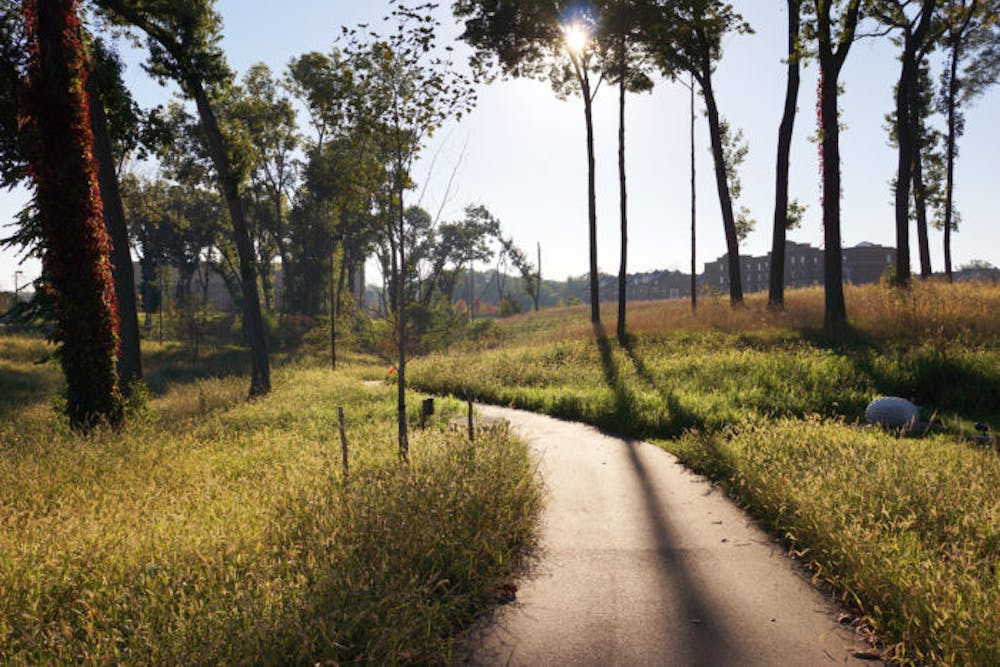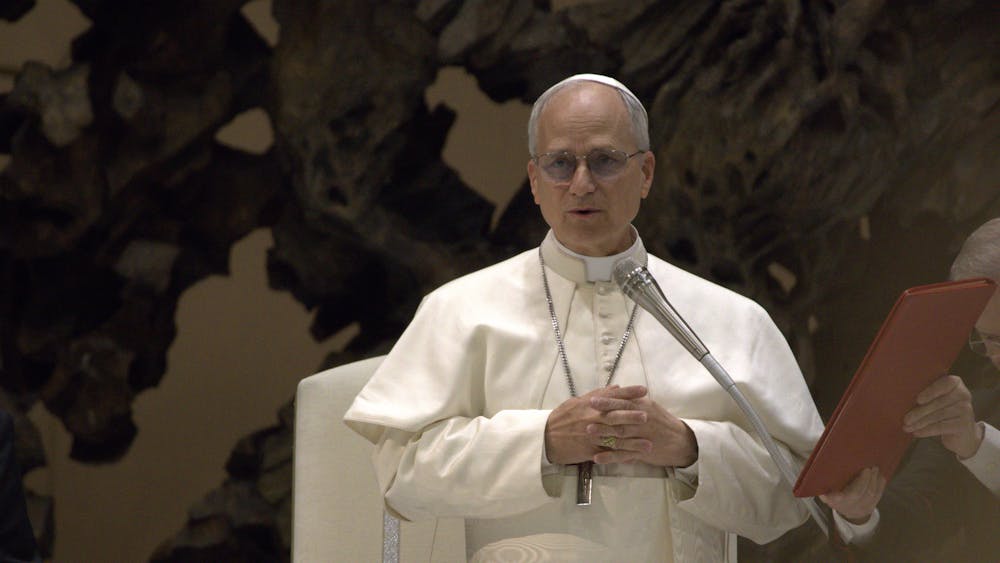Throughout April, Notre Dame Sustainability hosted a series of events as part of their Earth Month. The events include weekly green tours held weekly and a campus tree tour.
Senior and sustainability intern Joe Golden led a green tour on April 19. Morgan Munsen, a senior research and partnership program manager at the Nanovic Institute, said she felt excited to attend the green tour because of her interest in sustainability at Notre Dame. She also mentioned the Nanovic Institute's current efforts in trying to grow their research about sustainability.
“I was really excited to see this green tour so that I could get myself up to date on a lot of the current happenings in sustainability around the campus as the Nanovic Institute seeks to grow its research profile in sustainability. [Specifically, in] thinking about how we can bring European [perspectives],” Munsen said.
Geory Kurtzhals, the senior director for sustainability, also noted some of the office’s efforts toward decarbonization with the goal of becoming carbon neutral by 2050. The University has invested in geothermal infrastructure and a hydroelectric project in partnership with South Bend.
“The geothermal work helps to decarbonize our heating and cooling systems, while the hydroelectric project is an example of using a renewable electricity source,” Kurtzhals said.
Kurtzhals said the Office for Sustainability also has several partnerships with operational teams at Notre Dame. The office recently partnered with Notre Dame Transportation services to support the adoption of electric vehicles as part of the motor pool rental program.
Kurtzhals said the office has also worked with building services to build trust in Notre Dame’s recycling system.
“Another partnership includes our work with Building Services to rebuild trust in Notre Dame’s recycling system,” Kurtzhals said. “Recycling has been a challenge worldwide, not just at Notre Dame. Our partnership with Building Services represents incremental work toward updating campus infrastructure, processes and awareness of recycling opportunities.”
Kurtzhals said that in addition to their partnerships, they also engage with students, faculty and staff "to promote a greater understanding of sustainability,” which includes their Earth Month Promotion.
“This month, we’ve offered over a dozen events and engagement opportunities — several of which highlight the sustainability-minded features of Notre Dame’s campus and the partnership required to carry out sustainability work,” Kurtzhals said.
Barbara Hellenthal, associate professor of the biological sciences and curator for the Museum of Biodiversity at Notre Dame, also led a tree tour on April 19.
Hellenthal noted during the tour the walnut trees planted by the Congregation of the Holy Cross were placed as a money-making venture in the late 70s and not part of Notre Dame’s campus property.
Golden said the trees at Notre Dame are important because of their history and how tree canopies help reduce the overall outside temperature on campus.
“These trees have such a deep and rich history with Notre Dame. They not only are beautiful, but they're so diverse, and they create this canopy that helps reduce the heat,” Golden said.
Golden and Hellenthal in their respective tours pointed out a tree with a ring attached located on God Quad. Golden said the tree was planted during Father Sorin’s time, and the ring on the tree was used for horses.
“This tree has been here since Father Sorin was here,” Golden said. “They used to hook up their horses to this hook and go to the post office.”
Golden noted a project undertaken by the Office for Sustainability attempts to reduce the waste of 250,000 candles burned at the grotto by sending the candle wax to Quality Compound Manufacturing LLC, who uses the candle wax for industrial purposes. Notre Dame also sends the candle jars to Notre Dame’s candle supplier to be cleaned.
Munsen said the project shows how sustainability can be furthered by one person thinking creatively about a solution.
“It takes one person to have an idea,” she said. “Talk to another person and think creatively about a solution.”










